A Great Walk: Hiking the Abel Tasman Track
‘I slow down when hiking. The rhythm of nature is more leisurely. The sun comes up, it moves across the sky, and you begin to synchronize to that rhythm.’ – John Mackey.
Cut Off from the Rest of the World
We stumble across a particularly muddy patch and feel incredibly grateful that, for once, we’ve arrived at just the perfect moment. Our walk has been dogged by inconvenient tide times for the past couple of days. For once, we’ve struck lucky. The tide is out and we can cross the estuary to reach Awaroa Hut without any delay.
On the porch, we tug off our boots and drop our packs on the ground. We’re among the first people to reach the hut for the evening and it’s blissfully quiet and peaceful. I instantly feel incredibly privileged to be here. Accessible only by boat or through a multi-day hike, we’re about as cut off from the rest of the world as we can get. Or, it feels that way anyway.
Tomorrow will be the last day of the hike. As rain begins to fall outside, I cast my mind back over the past couple of days of walking. It’s been an amazing, at times difficult, experience. I wouldn’t have had it any other way.
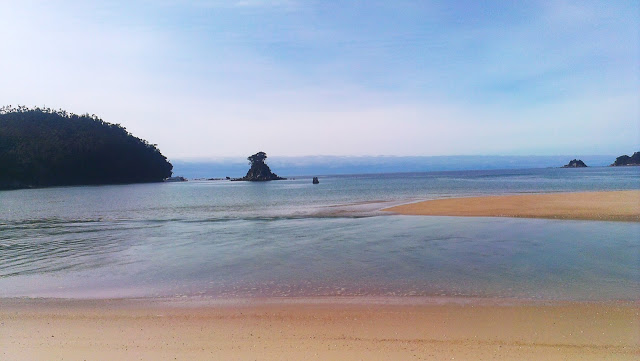
Pre-Hike Jitters
Since arriving in New Zealand I’ve wanted to do at least one Great Walk. It seemed silly to come all this way and not do any walks, especially since many are known as Great Walks because of their stunning scenery. I’m looking forward to the Abel Tasman track, but I feel mild trepidation too. I’ve never really done a serious multi-day hike before, unless you count a failed attempt at spending two days hiking some of the Pembrokeshire Coastal Path back in September 2013. What if it was too difficult? What if not showering for four days was really, really disgusting? Disclaimer – it is disgusting, but that’s what wet wipes are for…?. What if I got terrible blisters? What if my pack was too heavy? I have serious pre-hike jitters.
My nightmare scenario would be if I ran out of food. I make sure I stock up with plenty of snacks at the store. Cereal bars, peanut butter, apples and pitta bread will be my staple diet throughout the hike. I have a couple of trail meals for my evening suppers and select packs of noodles to tide me over for the last night on the trail. I end up being sincerely glad I got those noodles!
Some friendly advice
Prior to setting off, we meet a German guy who tells us he’s just hiked the track with nothing but a 30L pack. We are in awe. I seek his advice on how to cut down my load. My 65L pack suddenly seems extremely cumbersome and heavy compared to his meagre capacity.
He runs his eyes over my piles of supplies and removes a couple of things he doesn’t think I’ll need. To save space, he recommends I take only a small bag of wet wipes rather than the whole pack. Little hints and tips like this cut weight and free up space for more important things, like food. We are both packed by 10pm. It’s go time tomorrow morning!

Setting Off
The weather is sunny and warm when we set off at around 10am the following morning. We pose for obligatory photos by the Abel Tasman track sign and then head on out into the wilderness. It doesn’t really feel much like wilderness to begin with. We spend an hour or so meeting various day walkers, carrying wonderfully light looking backpacks. Everyone greets us with a cheery ‘hello’ and we take our time, stopping one several occasions on various beautiful little beaches. By 2pm, we are both a little footsore. We are pleased to see that the hut where we are spending our first night in is only a forty minute walk away, downhill the rest of the way.
Anchorage Hut, our first hut, is set in a beautiful location. It’s just back from the beach in Anchorage Bay. The sea is calm and a brilliant aquamarine blue, sparkling in the afternoon sunshine. We remove our packs, take off our hiking boots and bag bunks in one of the dorms. Other walkers have arrived already, all of them having come from Bark Bay to spend their last night of their hike at Anchorage. It is here and now that I realise that we are doing the whole walk the ‘wrong’ way round.
Going Against the Tide
Parts of the Abel Tasman track are tidal. This means that at high tide, you cannot walk along certain sections of the track. You have to take extended routes around the bays, on a high tide track. I booked our walk in January, months earlier, and didn’t really consider the tides at the time. Now, I can see that due to the high tide times during our walk, we would have been far better off walking north to south, rather than south to north, as we are doing. The north to south route accommodates the high tide times during the period of our walk far better.
I missed this and am irritated. It means we will no doubt have to walk the high tide track tomorrow and add an extra 4km onto the walk. Either that or wait until low tide, which wasn’t until midday.
I try to shake off my irritations and go for a stroll along the beach. Around the corner from the hut it is peaceful and nobody else is around. It is also warm and it feels great to be walking without my pack on anymore. I take a moment to reflect on the day and remind myself that even if I have made a mistake with the tide times, this hike is still going to be an incredible experience.
First meal: disaster!
Feeling slightly better and back at the hut, I use my camping stove to boil some water to make the first of my hiking meals. It’s an unmitigated disaster. The instructions say that I should use four cups of water. In go two cups of water. I wait and then open the bag. There it is, ruined. The promised rich and creamy sauce is watery and tastes of very little, the pasta is rubbery and doesn’t soften properly. The only good thing about that meal is the location.
I am pissed off. Then I remember. I have extra noodles! The other trail meal languishes in my pack for the duration of the hike and I eat noodles instead. We wind down, chatting a little, reading a little. We’re tired and go to bed almost as soon as it gets dark, not really up for mingling with our fellow hikers. I am sound asleep by 6.30pm.
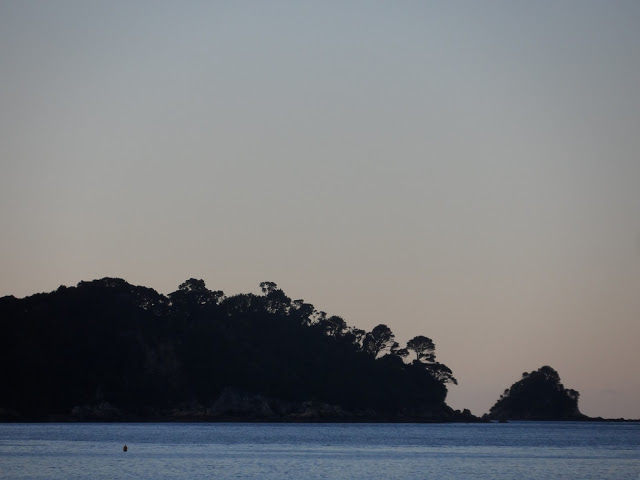
Onto Bark Bay Hut
We are on our way by 10.30am the next morning. I let G make the decision whether we wait for low tide or take the high tide track. He chooses the latter and our day begins with an uphill climb to join the main track, before falling back down almost to sea level.
The high tide track skirts around a large inlet and crosses at its narrowest point, where a river enters the sea. We take a side trip to see Cleopatra’s Pools, cool clear water spilling across mossy boulders. The track itself is easy going and flat. We stroll along chatting and stopping to take photos now and again. We barely see a soul until we reach Torrent Bay Village.
From the village, there is a steep climb up from sea level and onto the cliffs. Once we reach the plateau, the track stays steady and flat. The entire track turns out to be like that. Steady, easy walking with the odd hill thrown in to surprise us every now and again. For the most part, the track is two people wide and well maintained.
Our destination this evening is Bark Bay Hut. We arrive at low tide and the estuary the hut was located beside is empty of water. Once again, it is a relief to remove our packs and put on flip flops after a hard day in our boots. I head out into the dry estuary to take photos and explore. Shells crack underfoot. They litter the ground. Birds hop around, taking advantage of the low tide to have a good feed.
Evening at Bark Bay
I eat watery noodles for dinner. I realise I’m terrible at measuring the water out for my evening meals and eat the noodles somewhat miserably, while thinking about other delicious things I wish I could be eating. Afterwards, we play cards with two Germans, a French woman and an Israeli guy who explains he has just finished his compulsory years in the armed forces and is travelling before going to university. The hut feels friendlier than Anchorage and everyone chats with one another amicably. We turn in around 9pm and a miracle occurs – there are no snorers!
We have been informed by the walkers we encounter in Bark Bay that our walk the next day will be the easiest yet.
“Only three hours or so,” everyone tells us, confidently.
I don’t know if they walked the same track as us or not, but it takes us about four and a half hours and that was with only one break of half an hour!
The next leg
The climb out of Bark Bay is an unpleasant wake up call. Halfway up I stop to take my inhaler and down half a bottle of water. G plods on ahead, before pausing to wait for me and inform me that it is flattening out.
The air is muggy, I am sticky in the same clothes I have now been wearing for two days already. My head pounds, the blood rushing in my ears. I feel nauseous, but trudge on, trying not to complain. I feel relieved when we decide to stop at Tonga Quarry Beach for a snack and for me to put a blister plaster on my toe.
A couple of older guys chat to us while I tend my foot and then proceed to eat pretty much an entire bag of pistachios in one go. They tell us about the track ahead, we tell them about the climb they have coming. We part ways thirty minutes later shouting goodbyes over our shoulders.
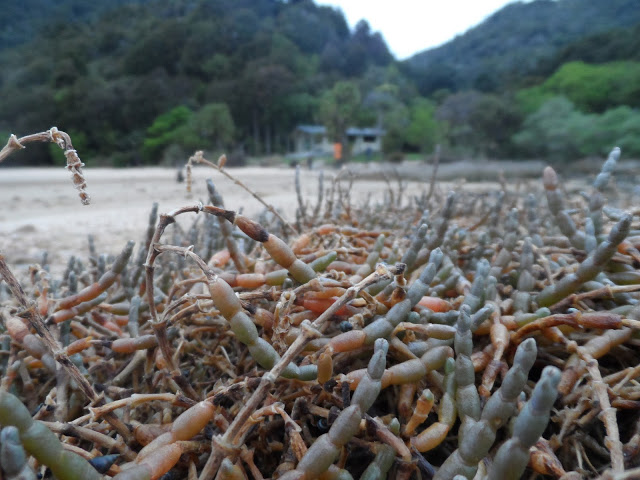
The Approach to Awaroa
Fantails follow us as we re-enter the woods, tweeting incessantly and fluttering close beside us. They’re my favourite New Zealand birds and I feel joy whenever they come almost close enough to touch.
We hike 2km along a sandy beach and turn inland, crossing a bridge and once again facing an uphill climb. This is less steep than earlier and once we plateau, we are walking on a flat, well-maintained pathway again, which needs little effort or concentration. We are tired though. Two days of walking prior to this has taken its toll. My feet hurt, my back aches and when we descend through the woodland towards Awaroa, my knees twinge with pain. Although I’ve eaten nearly all my food, my pack feels no lighter.
And at last, we reach the hut. There is no electricity at Awaroa. I cook dinner early and manage to get the water to noodle ratio right this time. I write in my journal and wander outside again, taking more photos. As the time passes, the hut gradually fills up as people brave the estuary crossing as the tide gets lower and lower.
A German who has been hiking the inland track tells us he’s seen no one in three days. This is the first hut he’s shared. He is soaked, having crossed the estuary too early, not realising the tide would continue dropping.
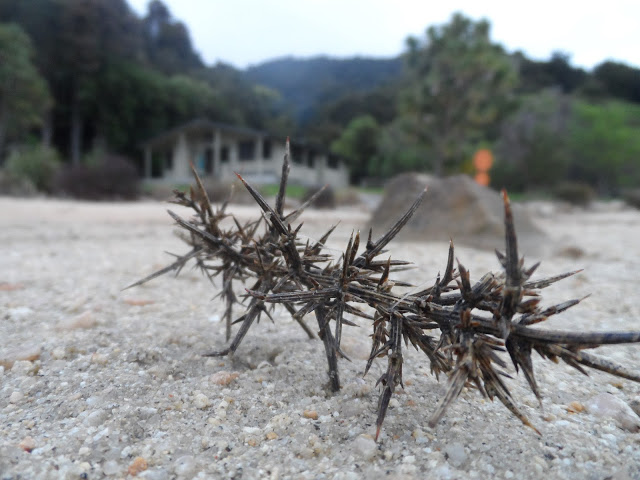
An evening at Awaroa
We chat to our fellow hikers as night falls. Our torches shine yellow beams around the room. Some of us play cards. The evening is somewhat ruined when the German, in a bad mood, stomps out of the bunk room at 7pm to tell everyone he can’t sleep as there is too much noise. We’re slightly irritated – the noise levels were fairly low. Our moods dampened, we head to bed shortly after. Despite the slightly sour taste, I’m reminded once again how privileged we are to be here as I pop outside to use the toilet.
The rain has ceased, leaving behind a velvety black sky dotted with the occasional cloud. Stars glitter. It’s so quiet, so still. There’s not a car for miles, no permanent residential dwelling nearby. Just the few of us in this hut, spending a sacred night in isolation.
It turns out that getting an early night was a good idea after all. The final day sees us have our earliest start, since we must ensure we cross the estuary before high tide. If the water is too deep, we won’t be able to cross and we’ll be cut off, missing our boat out of the wilderness.

Getting Out
There is hardly any walking today. By afternoon, we’ll be back in civilisation. Our water taxi is booked, it’s an inevitable return. Despite my longing for a hot shower and some decent food, I’m sad at the prospect of ending.
I take off my boots and cross the estuary barefoot. It feels good to have the sand between my toes as I wade, the chilly water waking me up. I walk the length of the beach beyond without shoes on. We go in search of the tiny visitor centre, where we can wait out for our water taxi. It’s out of season, so the centre is closed, but we meet Kevin.
He’s the caretaker of the visitor centre and is chatty and friendly. As it’s closed, he offers us the use of the manager’s flat to make breakfast. We gladly accept and eat our final meal in the relative comfort of a furnished apartment. As we finish, he returns and offers us tea or coffee at his bach. As we sip our hot drinks, he tells us about life in this remote corner of the country. There are two of them living here, just them since August. It’s obvious he’s pleased to have some new faces to talk to.
Catching the water taxi
The water taxi doesn’t turn up at 10.30am. Kevin lets me ring from the landline and takes us to the end of the beach to catch our life. We wave goodbye cheerfully and jump aboard the small vessel. Packs stowed and life vests on, we head away from shore.
It takes nearly an hour to get back to Marahau. It’s nice to see the national park from a different perspective. I’m proud to say I’ve spent three days hiking the track, and three nights living in basic huts surviving on watery noodles. I am sad to be leaving. I ache, and I long for a shower and some ‘proper’ food, but this has been an incredible experience. Now, the weather breaks and rain begins to fall in earnest – fat, heavy drops. I sit back and enjoy the prospect of lying in bed, eating food, clean and warm.
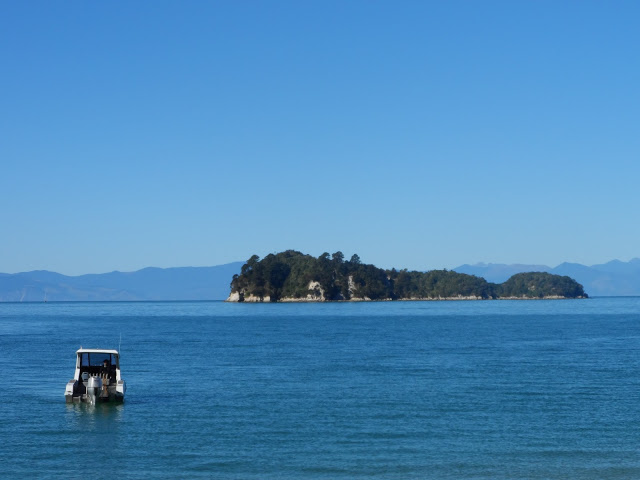
The End of the Hike
Our walk is over. We’ve completed 32km altogether, plus a few extra kilometres in side trips. We are sore and tired and smelly and aching and damp. But we’re also triumphant and proud of ourselves, thrilled at our accomplishment.
It has all been worth it. Every difficult step, every shitty meal. All those soggy noodles. I can look back and recommend the hike whole-heartedly. It’s an amazing achievement.
If you’re looking for mountains and epic views, then take the Routeburn or Milford tracks. But if it’s the sand between your toes that you love and the excitement of wading across estuaries you crave, try the Abel Tasman track. Only here can you fall asleep to the constant lapping of the sea and the wind whistling through dense, green foliage. This is the only place you’ll walk atop cliffs, trudge along sandy beaches and take a boat as part of the experience. Try it – I promise you won’t be disappointed!

The Logistics
I booked our huts for NZD$32 per person per night at the time of writing. Huts must be booked in advance – you can do this by visiting the DOC website. Alternatively, you can camp, which is cheaper, but be aware this means you’ll have extra equipment to carry and your pack will be heavier.
The huts are clean and the beds reasonably comfortable. You’ll need to bring a sleeping bag and your cooking equipment (stove, gas, pot) as a bear minimum to ensure you have a reasonable stay in the huts. No cooking facilities are provided. All the toilets flushed and there was toilet paper available, but it may be worth bringing your own just in case. Cold showers are available if you think you’re hard enough, or take a dip in the sea! I chose to use wet wipes.
Awaroa Hut has no electricity so a torch is essential here. I’d also recommend bringing a book or a pack of cards to keep you occupied in the evenings.
If you’re so inclined, you could combine your hike with some sea kayaking. I previously kayaked in Abel Tasman National Park with Abel Tasman Kayaks, which was a fantastic experience.
Don’t be like me – check the tide times carefully in advance for the dates you’ll be hiking and plan your route accordingly. You can book your water taxi through a number of companies, although I used Abel Tasman Aqua Taxi. It cost NZD$45 per person one way from Awaroa to Marahau. Depending on tide times and the route you choose, you can take the water taxi to the beginning of your hike (north to south) or at the end, as we did (we hiked south to north).
There is no signal or internet on the track, apart from some possible, patchy reception in Bark Bay. Here, I managed to get data and signal to let people know I was alive and to ring the water taxi to change our pick-up location.
NB: The price of staying in a hut on one of New Zealand’s Great Walks has increased for international visitors since the time of writing this post. For new prices, please follow the link above to the DOC website.
You can read more about my adventures around New Zealand in the archives!
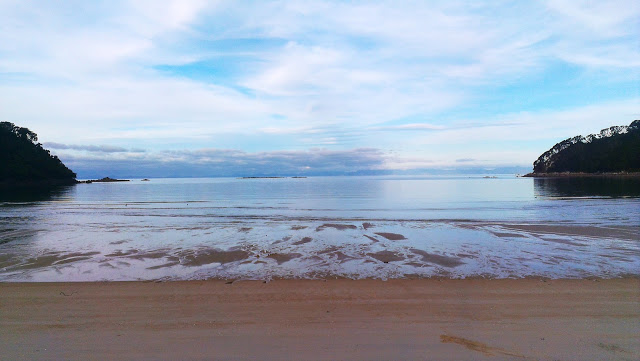
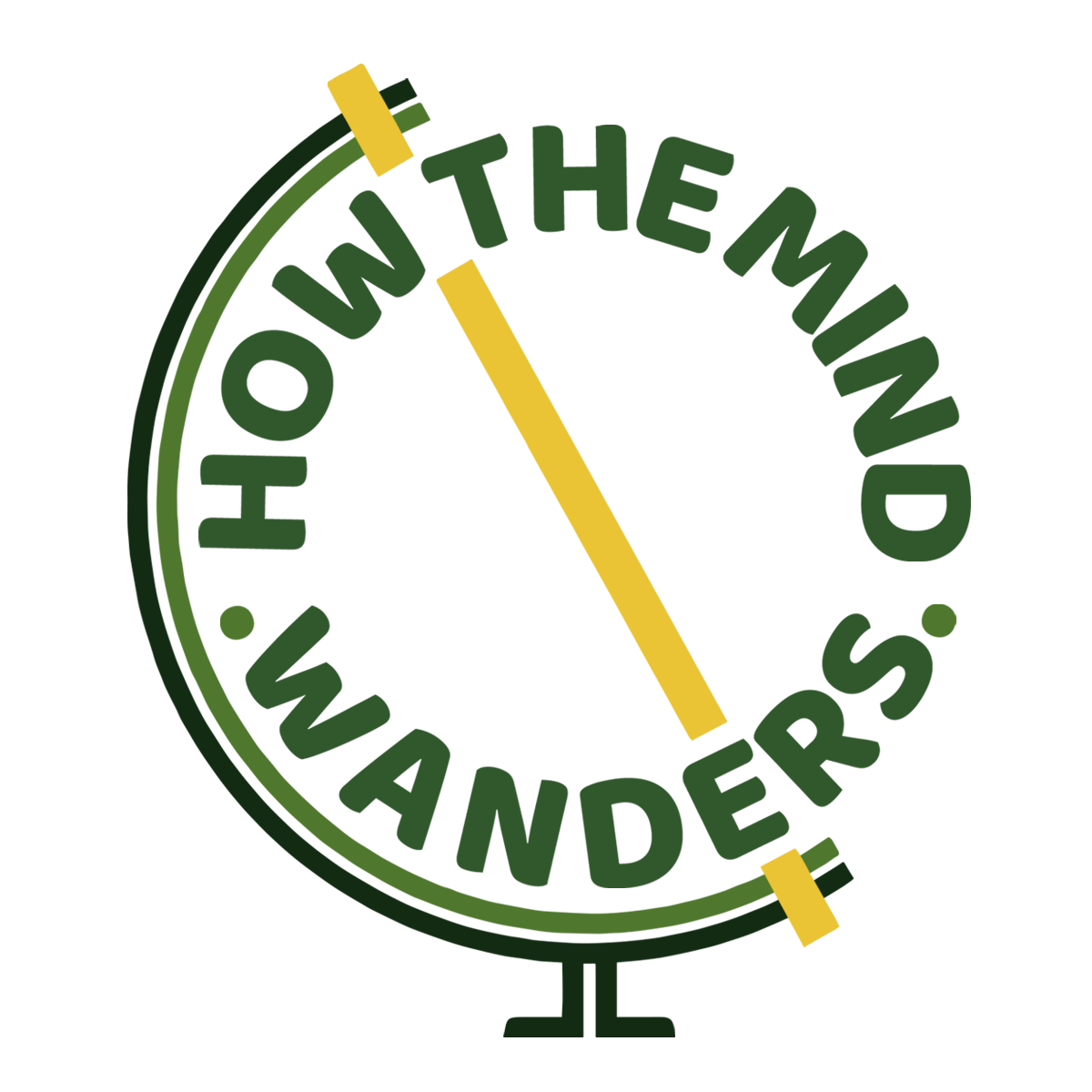
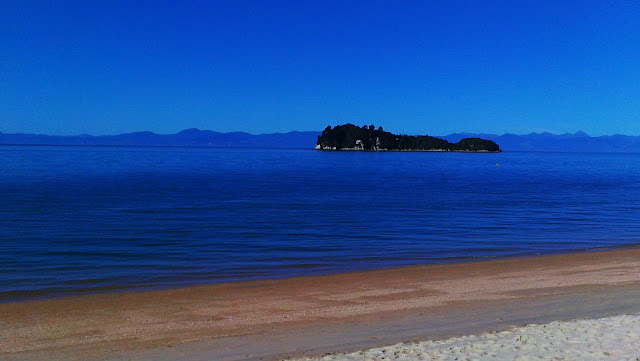
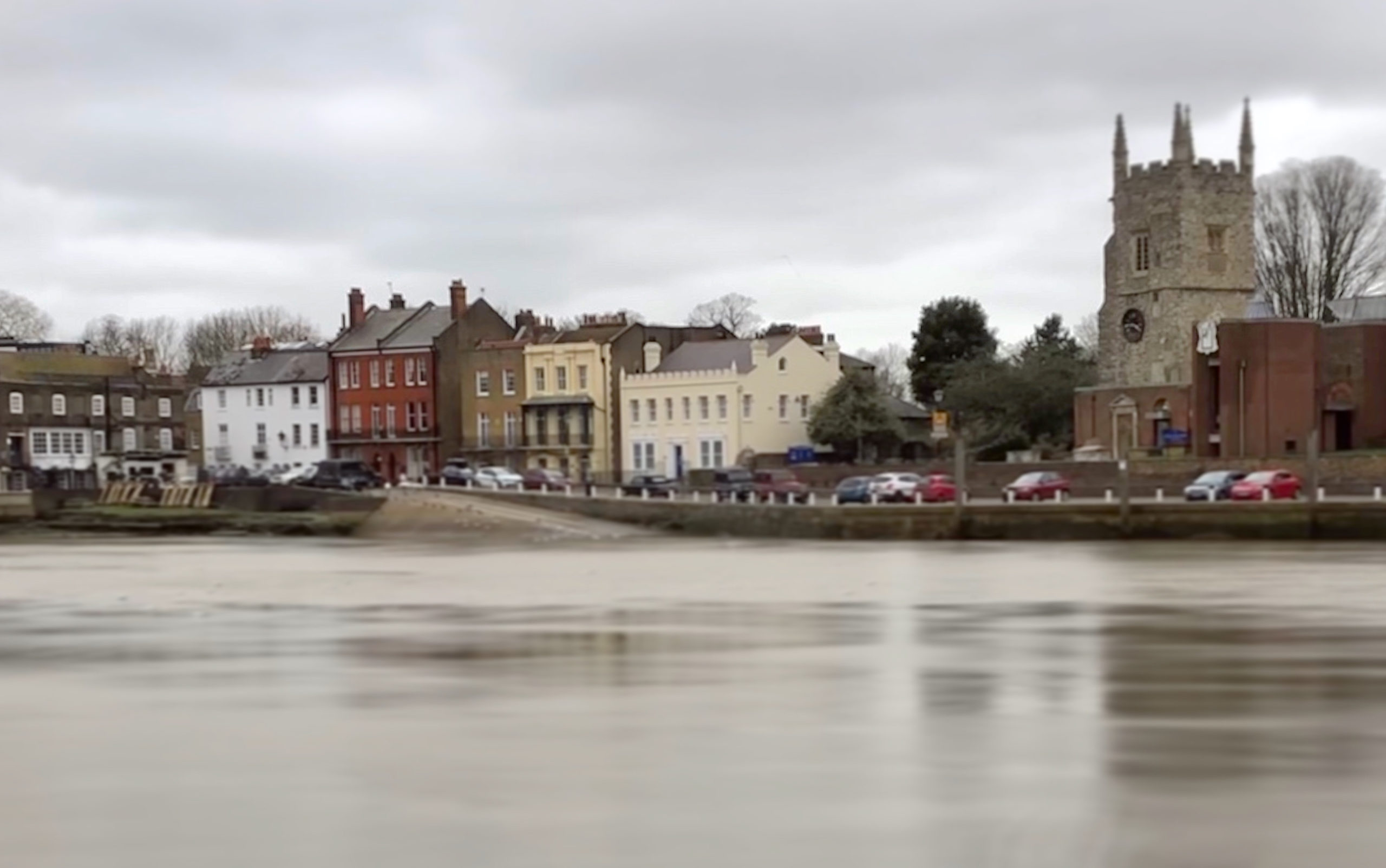

Nice write up
Thanks Richie!